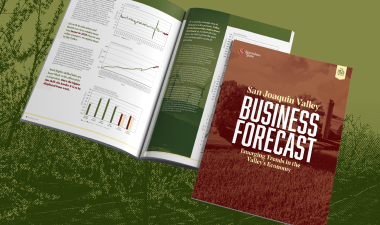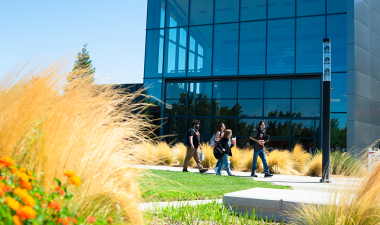In line with predictions made in previous San Joaquin Valley Business Forecasts, total employment growth in the San Joaquin Valley, following years of gradual expansion, appears to be hovering near peak levels. That represents a slowdown in growth that began in 2016 and continued into 2018. While a decline in total employment is not likely to begin soon, there is evidence pointing to this slowdown in almost all categories of employment. That’s the outlook of Gökçe Soydemir, the Foster Farms Endowed Professor of Business Economics at California State University, Stanislaus, in his biannual Business Forecast.
Here are highlights of Soydemir’s findings and projections regarding the San Joaquin Valley:
- Inflation has risen to a yearly rate of 3.1 percent. That’s concerning to the Federal Reserve, which is likely to continue its pattern of hiking interest rates about every three months to cool off the economy. Attempts to tame inflation, however, will run counter to tax cuts and increased government spending, which is an effort to improve the infrastructure of the national economy.
- Regions such as the Valley are likely to suffer more from interest rate hikes than other well-developed regions. In addition, the tax cuts will not have the same benefit to Valley consumers because of higher unemployment rates, home prices and the unskilled/skilled composition ratio of the workforce.
- Projections point to an average yearly growth of 1.26 percent in Valley total employment over the next two years. This is noteworthy because the yearly growth in total employment in 2017 was 0.90 percent, which fell below the long-term average rate of 1.18 percent for the first time since the end of the recessionary years.
- Rate hikes, combined with tax cuts and infrastructure spending, are likely to have mixed effects on the dollar. While tax cuts will tend to depreciate the dollar, rate hikes tend to have the opposite effect. As such, it appears that the preference of the current administration is to maintain a weak dollar.
- Newly imposed tariffs on China may increase the domestic price of steel and induce a retaliatory response, negatively affecting almond and other agricultural exports.
- As expected, foreclosure starts began climbing back up as the increase in long-term interest rates became very visible.
- The Valley economy is projected to maintain a slower pace in the year ahead due to the faster impact of the financial markets, and slightly improve in 2019 due to impact of the tax cuts on the goods markets of the overall economy.
The biannual San Joaquin Valley Business Forecast provides projections for the Valley’s labor market; regional housing conditions; prices and inflation; banks and other depositary institutions; and capital markets. Soydemir and his team use a unique forecasting model that produces lower and upper statistical confidence bands, with results that are expected to fall within this range.
Soydemir joined Stanislaus State as the Foster Farms Endowed Professor of Business Economics in 2011. He brings strong expertise and experience in business analysis and forecasting and has published extensively on applied econometrics, regional economics, financial forecasting, market analysis and international finance.



